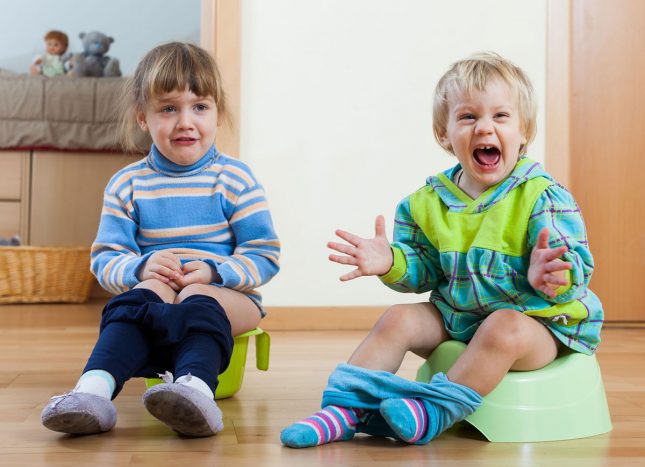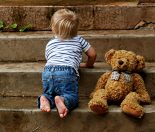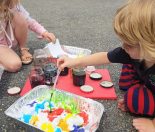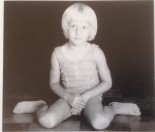There are lots of different ways to potty train your child. Some parents are super-lucky and watch as their child virtually trains themselves, others find it takes much longer than they thought it would. Here’s the 5 most common and most failproof potty training methods you’ll find online today.
Of course, you can’t really fail when it comes to potty training, it all comes down to the child and every child is unique. But there are some common methods lots of people have used successfully. These may help to reduce both tension, and timeframes.
From the super-intensive, to the almost hands-off, from 3, to 7, to 21 day methods (it takes longer by the way!), from nappies on, to nappies off… yikes! Now throw into the mix a dizzying array of potty chairs, and toilet attachments on the market today, and it’s really little wonder parents can get confused!
Do I even need to learn potty training?
This is a great question. Some parents find they just follow their intuition, and between them and their child, they work it out for themselves. Others sort of ‘muddle’ their way through this stage, but it probably creates a bit of tension, and takes longer than it should. Other parents really struggle with potty training and find their child resists, or regresses, like crazy.
The thing about potty training is that it’s not a natural process for your child to learn. So they do need some guidance from us. This is unlike a lot of stages you’ve experienced up until now. We don’t need to teach our children to eat, they’ll learn to walk without our help, and by mimicking our voices they even learn to talk before we ‘teach’ them how to.
But nappies, and beds, and toilets are modern devices. 1000’s of years ago, children probably learnt how to ‘go’ behind a rock as cleanly as possible (I’m sure there were as many accidents in the cave, as there are today in the kitchen!). But it’s not so easy now that we have all these rules and structures.
So, peeing and pooping are natural functions, and not something we need to intervene with. But, peeing and pooping in the right place, at the right time, is definitely a learnt skill!
And, like most things in parenting, the more knowledge we have, the better we can guide our children. And, especially with potty training, the more we understand what’s happening at the physiological and emotional levels, the better prepared we’ll be. Both to work through this stage quickly, and also to deal with the inevitable set backs.
Being ‘ready’ for potty training
Before we jump into the 5 most common methods of potty training, it’s important to discuss ‘readiness’ and ‘preparedness’ for using the potty. One of the methods below doesn’t require your child to be ‘ready’, but for all the others this is one of the key differences between failure and success.
There are a number of readiness signs and signals that your child will display. These happen slowly over a period of about 6-12 months, from around the age of 1. The readiness signs differ from child to child, and not all children will show all of them. So it’s by no means a perfect science, your intuition will come into play.
Preparedness is much more in your control, and something you begin to work on as your child shows readiness signs. You prepare your child by engaging with them in the bathroom, beginning to use ‘toilet’ language, working on simple directions and body labels, etc. And then just prior to training, taking them on a special big boy/girl underwear shop, maybe shopping online for a potty or toilet adapter with them, and creating a sticker chart together, then prepping them for the big day!
For a quick outline of some of the readiness signs see What to do when potty training is just not working.
5 Most Failproof Potty Training Methods
The 3-day potty training method
This is a classic method that was made popular in the 1970’s by the behavioural psychologists Nathan Azrin and Richard Foxx. They wrote a best-selling book called Toilet Training in Less Than a Day that you can still get on Amazon.
There are a lot of people who have used this method successfully, and it is based on science. You only need to look at the Amazon reviews to see that it has it’s place. Just be warned, that it’s been heavily criticised as well. If you can get past the academic writing, the generalisations and sexism, you’ll probably still find the content abhorrent! There is just no way we could ever recommend a method where you’re expected to march your toddler back and forth to the potty in wet underwear. Enough said.
There are, however, modern versions of the 3-day method, with a few more sensibilities built in. This is definitely something you may want to investigate. Two of the more popular programs are Brandi Brucks’ Potty Training in 3 Days that you can buy in book, or Kindle version. Or the Start Potty Training program, which is an e-product so available on Kindle, iPad, etc.
The 3-day method is an all-in approach to potty training. The basis is that you need to shut you and your child in the house for a full 3 days, and focus 100% on potty training. The usual idea is to do this over a long weekend, taking the Friday or Monday off work. You have to be totally committed to the potty, so no visitors, outings, sports, or activities whatsoever.
Then it goes along these lines (each program being slightly different):
- Make sure you’ve already taken your child potty, or toilet seat adapter, and new ‘big boy/girl’ underwear shopping. And make sure your fridge is well stocked with food (and probably beer/wine, it’s going to be a loooong weekend).
- wake your child on Day 1, and when you go to change them, make a great, big song and dance about throwing the nappy away for ever. They’ll never need to wear a nappy again!
- On Day 1 your child just wears a long shirt, no nappy and no underwear, so they can feel what’s going on down there.
- Immediately following breakfast, take your child to the potty, sit them on it and hang out/read a book/sing a song, just don’t expect anything to happen yet (if it does, make a big song and dance about it, and praise like crazy).
- Now just go about your day, making sure to give your child heaps of liquid, way more drinks than you normally would. But every 15 minutes or so, walk your child to the potty and have them sit on it to see if they can go. Whether they do or not, praise them for doing a great job (you can use a rewards-based system here too).
- Stop giving any liquids after dinner, and make one last potty-stop as part of the bed routine.
- Wake your child up half way through the night (you’ll probably want to set an alarm), and take them to the potty to try and go (if you can wake them!).
- Day 2 is pretty much like Day 1, except this time they go commando (wearing pants, but no underwear). You stay totally confined to your home, taking your child to the potty every 15 minutes.
- Day 3, ground-hog day, but now with underwear as well as pants.
That’s it, your child’s toilet trained! There will be a lot of mess by the way. Your child will pee, and possibly poop, right where they’re playing on the carpet, or in their bed. And quite a few times at that. It’s important to remember that this is part of the process though. Your child will begin to associate the feeling in their lower belly, with the function of going to the toilet.
At the same time, with your religious marching back and forth to the toilet, they should catch at least one of these episodes in their potty. After being showered with an over-the-top amount of praise, your child begins to associate using the potty with pleasing their parents.
It’s probably important to note here that most parents say they experience accidents for a few days, up to a couple of weeks after the big weekend. This is totally natural, and part of the process. Just make sure you’re mentally prepared for this part! This is also where a rewards system can help, by reinforcing all that positive behaviour they’ve just learnt.
I think the science behind the 3-day method is probably sound. And for kids that are ready to be trained no matter what, it probably works really well. The more modern versions of this method are definitely the way to go.
The one week potty training method
The one-week method is a more modern adaptation of the 3-day method really. It provides more flexibility, and creates less tension and fuss. It requires focus and routine, but not the same sort of all-or-nothing of the former method. Some parents also find they can use the one-week method separately for daytime training, and then use it again down the track for night time training.
The one-week method was made popular by Gina Ford’s book Potty Training In One Week. Gina Ford has been called the ‘Queen of routine’ and takes that no-nonsense, ‘stop mucking around and get the job done’ sort of approach to potty training. I like that.
So in a nutshell, the one-week method goes like this:
- Block out a week in your diary (yes, you heard that right, the idea is to take time off work if you need to, but make sure you have a full week of focus).
- Make sure you’ve already ‘prepped’ your child by introducing them to the bathroom, taking them shopping for potty and underwear, practiced some ‘dry runs’ hanging out on the potty, etc.
- One of the key differences of the one-week method, especially in Gina Ford’s program, is that rewards are fundamental to making this work. So spend some time, ideally with your child, making up a sticker chart, or progress guide, and pick up some rewards for positive reinforcement. The actual rewards are up to the parent, but we know that small treats work best. A couple of jelly beans, or M&Ms, are the right amount of treat for individual task rewards. A small toy (like the ones you get in a Kinder surprise) are ideal for daily success.
- The first couple of days are essentially the same as the 3-day method. Just follow the steps outline above.
- Every time your child sits on the potty for at least a minute, washes their hands, or flushes the loo, reward them with a sticker and a treat. If they actually go in the potty, up the ante and reward them with a sticker and 2 treats! If they complete a day’s worth of tasks, give them a toy (you see how this works, right?).
- On Day 3, take your child on a short outing, like to the park or playground. And, yes, they have no nappy on! Make it a short and sweet trip, and make sure your child understands they have no nappy on, and must tell you if they need to go.
- On Day 4, you push them a bit harder, and take them to one of their favourite places, like the beach, the mall, or wherever. Remind them they have no nappy on and that you’ll all have to leave if they don’t make it to the toilet, so they really must tell you when they need to go.
- If they make it through the outing, or use a public loo, praise them like crazy. If they have an accident on the mall floor, don’t make a fuss (probably tell an attendant) and hustle them back into the car to head home. I imagine this will create a meltdown. Your child’s now wet, and missing their favourite activity. Try and ignore the tantrum, and calmly explain that they’re a big kid now, and can’t go about the place peeing in their pants.
- Days 5 and 6 are pretty much like Day 3 of the 3-day method. Just lots of encouragement and reinforcing positive behaviour. You’re also building in more outings, trying for a couple a day, and longer distances. Plan for accidents, but by this stage your child should be getting it.
- Day 7, throw a massive party, bake a nappy-free cake, and reward yourself with copious amounts of wine… you deserve it!
The infant training and child-oriented potty training methods
I’ve included these 2 methods in the same section because they’ll appeal to a much smaller audience. Both of these methods can be successful, and both have their fans. But most parents will find both of them quite impractical.
In a nutshell, infant training is basically leaving your baby out of their nappy all day, and holding them over a bucket when you see they need to go. The child-oriented method is basically leave them in a nappy for as long as they choose, and eventually they’ll decide when to go.
Infant training method
The infant training method isn’t a new technique. It’s how parents have toilet trained their babies for 1000’s of years. It’s also still the ‘normal’ way to potty train a child in many parts of Asia and Africa. In many ways it’s the creation of modern-day devices, the toilet, the disposable nappy, etc that’s created a need to potty train kids at all.
For some parents, this method really fits with their parenting philosophy. They’re likely to be proponents of attachment-parenting, and probably have the time to invest.
The infant training method goes something like this:
- You start ‘training’ as soon as you can, even from birth, the earlier the better.
- Leave your baby out of nappies all day. Some parents opt for a nappy at night time, others go right round the clock.
- Learn to recognise when your child is about to pee or poop. Most children (although not all) show some sign of needing to go before they do. This is one of the key benefits to this method; you’re learning to communicate with your baby at a very young age, which is pretty cool.
- As soon as you see a sign, scoop them up and hold them over a bucket.
- While they pee, or poop, into the bucket, make a sound like running water, ‘sssssss’. Use this sound every time they go, and they’ll start to associate it with using the toilet.
- Some parents do use a nappy for outings and at night time. But proponents of this method suggest using cloth nappies, rather than disposables. Disposables are so absorbent that your child won’t know when they’ve gone.
- Stay positive and gently train your child on the expected behaviour. This is a long term, softly-softly approach. The idea is to go with your child’s signals, instead of creating artificial routines around them.
- At some time between the ages of 12-18 months, you can expect your child to head towards the bucket, potty or toilet when they need to go. By the age of 2 years, they’re trained!
This is certainly a gentle approach to potty training, and clearly it works. Some parents get a bit disillusioned by it though, as there will be a lot of cleaning involved. Also, children’s brains simply aren’t connected to their bowels sufficiently enough to know they need to go, until around 18 months. So definitely don’t expect them to learn before this.
In our humble opinion the infant training method, although it makes perfect sense, is an unreasonable expectation for most parents. Baby poop is 80% liquid, and sometimes appears 3 or 4 times a day. It can also be expelled as a fairly violent projectile. All I’m saying is that you’ll want to invest in a lot of buckets…
Child-oriented potty training method
The child-oriented method to toilet training was developed by T. Berry Brazelton. The philosophy of this approach comes from the child-centred field of research. Child-centred is basically allowing your child to develop at their own pace, make their own choices and establish their own ideas. This lets your child develop without all the man-made structures and routines that can create real road-blocks for some children.
So, the child-oriented training method goes something like this:
- Let your child wear nappies day and night.
- Praise and encourage your child whenever the display behaviour you want to reinforce. But do not push them into doing anything.
- Watch as they slowly learn to develop the skills of using the potty or toilet.
- Once they have taught themselves how to use the toilet, they can stop wearing nappies.
It all seems so sweet and simple doesn’t it? I think this is a good interlude to note that Professor T. Berry Brazelton is the spokesman for Pampers diapers. Is that a conflict of interest? We think so.
In our humble opinion the child-oriented method, which does put the least amount of pressure on your child as any method here, is just impractical in the modern-world.
You’re going to spend an absolute fortune in nappies. There’s a high likelihood your child will still be in nappies at kindy and even school, which could be a real cause for embarrassment.
Also, assuming your child will learn something just because a certain amount of time has passed, is setting you both up to fail. Sure, some kids will eventually just start using the loo, as they see their parents and other kids doing. But others will become so used to their nappy that getting them out of it will create anxiety, tension and resentment; all the things this method is meant to prevent!
Oh, Crap! potty training method
The last, but definitely not least, failsafe potty training method is the very popular parent-led training technique known as the Oh, Crap! method.
Parenting expert Jamie Glowacki wrote a book called Oh Crap! Potty Training: Everything Modern Parents Need to Know to Do It Once and Do It Right, that has plenty of glowing reviews from happy parents. Glowacki says potty training should be done in steps, or what she calls ‘blocks’, and she made a set of five blocks to help with this.
The idea behind the Oh Crap! potty training method is that each child learns at their own pace, and as parents, we can focus on each block individually, only going on to the next one when the first one has been mastered.
This method can make toilet training way less stressful by breaking everything down into smaller steps. However, finishing may also take longer because it gives kids more time to work through the process. So Oh, Crap! potty training is a long game. But by not pushing too hard, you’ll likely find this the less stressful method for you both.
Block 1: Using the potty without clothes
The first block will get your child used to using the potty quickly, just like many boot camp-style ways. Your child won’t wear underwear, pants or nappies during this block, so you must stay home. This will also make sure there’s always a bathroom close by!
At this point, keeping a close eye on your child and telling them to use the toilet is satisfactory. They should use the potty and learn quickly when to do it.
Many kids will make lots of fun mistakes at this point, and that’s fine! This will help them learn to use the potty when they need to. When this happens, gently tell your child they must use the potty. You can move on to Block 2 when your child regularly uses the potty (with reminders) and does not have accidents.
Block 2: Going commando
In this block your child will wear pants but not underwear. You will still stay home and tell your child to use the potty. In this block, your child gets used to having their pants in the way when they must go. So hopefully will start to learn to leave a bit of time between ‘needing to go’ and ‘going’.
You could try going on a short trip if you’re having a lot of luck right now, for instance going to a park close by.
Once your child is regularly using the potty and not having accidents while wearing pants, you can move on to the next step.
Block 3: Going outside the home
Block 3 is all about being able to go to the bathroom wherever you are. Your child will still be going naked during block 3. But since they have already shown they can use the potty at home, it’s time to grab the travel potty and start going out.
Many parents need help teaching their kids to use the toilet in public bathrooms. Your child might be scared of the bathroom because of all the extra noise and people.
So be patient and kind (on yourself as well as your child!) with this block, you must be patient and think about how close you are to getting there. Block 4 comes when your child can go to the bathroom anywhere.
Block 4: Going fully dressed
Now that the first 3 blocks are done, you will put your child in big kid underwear. Remember that they may still need to be reminded to go to the toilet. If you need to, you can even use a potty training plan, and a reward system like sticker rewards.
When it’s time to go pee, your child may need extra help with the extra clothes too. As long as they can go on trips outside the home, fully dressed, and not have accidents, then block 4 is conquered!
Block 5: Can go by themselves
Block 5 is when you finally stop telling your little one to go to the potty. You’ll be checking to see if they can use the potty on their own. At first, they may have a few mishaps, which is totally normal. But slowly they’ll start to understand their own body queues.
You can still tell them now and then at first, but take a step back, maybe just reminding them more generally to remember about the toilet each day. Once they regularly take the first step independently (without you reminding them), they have mastered this block. During the day, they are fully toilet-trained.
Block 6: Night-time training
Block 6 is all about getting your child out of nappies during nap times and at night-time. Nap times are the best place to start, training your child to use the potty before and after naps is great training for night-time. Some kids just naturally stop wetting themselves at night as a response to using the potty during the day. For others, some more coaching and perhaps a new night-time reward system, can be enough to sort night training.
But for plenty of parents, night-time training is a much longer process and can take up to 6 months or even a few years, which is fine. A small percentage of children will still be in nappies up to the age of 5, and even older. Check out our article on bedwetting and enuresis to learn more.
Conclusion
So, there you have it, the 4 most common potty training methods available online. Potty training definitely requires some work from parents, and it’s a bit of a messy business really! Going in with a plan will certainly save you and your child a lot of tension, but before you know it they’ll have this life stage cracked!
It’s worth dropping in one more important point here. Although most potty training programs are called ‘potty train your kid in ‘x’ number of days’, training actually takes many, many weeks. A lot of parents seperate daytime from night time training (even by up to 6 months or more). And most kids will have a number of regressions over the weeks and months after they first ‘learn’ how to use the potty.
Just make sure you plan for this, and don’t be too disappointed if your child takes more than a few weeks to get it. Learning to use the potty is a major life milestone, and it takes a fair bit of guidance, and a fair bit of time.
Comment below if you’ve used a different method, or know of any great resources we should add to this list. And for more great toddler development advice, check out our Toddler development section.














I was desperate to try anything after my 2.5 yr old refused to go potty. She was 1 out of 3 kids in the class and she was the only one crying and refused to go. After 3 hours of tears she finally broke the seal, but was still scared. The next day at home was tough but she caught on and remembered things from the class and then was excited to go on the potty. Highly recommended!
That sounds really pragmatic. Our advice is not too push too hard. Our daughter just wasn’t ready at all until almost 3, and then completely taught herself to go one day while we were all outside! Good luck, I hope it went well. — Jarrod